From Marilyn Monroe to the Sacred Blue Frog and Beyond
How a Ladies Who Lunch glossy magazine took me to the front line of the new Native American renaissance
Highway to Heaven: driving through the Hopi reservation in Arizona with Antonio Romero, co-founder of Red Road Journey
I always scoffed at the idea of the “ally.” In the LQBTQ sense. Suddenly in the early 2000s you’d get all these straight people coming to Pride with their kids, cluttering up the place and sanitising the atmosphere - whereas all you wanted to do was find a lesbian to shag.
And then I became an ally. Not in the LGBTQ sense, but in the indigenous peoples sense. When I first arrived at Garth’s cave land, I was over-awed by this giant who’d lived in a tipi for 43 years and by the experience of living so close to nature. But gradually, I started wondering who’d lived here originally.
One of the other cave dwellers, Pxl, used to show me acorn grinding holes on the land. He talked of how the three main Indian tribes: Cahuilla, Serrano and Chemehuevi, would come and go depending on the seasons and the availability of different foods. I got interested in acorns. They were a big element in the Native diet, but they were so bitter so how did they eat them? And then I went to a talk in Joshua Tree about Native foods by Serrano-Cahuilla Elder Kim Marcus. He showed how the indigenous people processed foods in the high desert. (You have to leech the acorns in water. They still have a bitter nutty taste, but crushed bean pods from the local Mesquite trees taste like the best chocolate powder ever. Kim told us they were known as “Indian candy.”)
Ironically, it was because of one of those Ladies Who Lunch glossies that I started finding out more about the First Nations of America. It all began this time last year in Palm Springs when I learned about the sacred portal to the underworld located opposite the frozen yogurt shop at the intersection of Indian Canyon Drive and Tahquitz Canyon.
The accepted creation myth of Palm Springs is that it’s the place where Hollywood stars of the 1930s such as Greta Garbo and Clark Gable could escape from LA and have fun. But according to Cahuilla legend, everything began when a sickly medicine man called Tu-to-meet struck the ground with his staff and a boiling mineral spring emerged (at the location currently opposite the frozen yogurt shop.) When the medicine man descended into this watery underworld, he encountered powerful spirits called “Nukatem.” Finally he met the mighty Blue Frog who cured his illness and gave him renewed life force.
I learned all this because a posh new spa called Séc-he (meaning “the sound of boiling water” in Cahuilla) had recently opened. It is run by one of the nine bands of the Cahuilla Indians known as the Agua Caliente tribe. I interviewed Reid Milanovich, the head of this tribe. He told me that the water in the spa is 12,000 years old – referring to the time it takes for the snow to melt down from the top of the nearby San Jacinto mountains and find its way into a chamber located 8,000 feet below the surface of the earth (opposite the frozen yogurt store.)
Sacred portal: chairman of the Agua Caliente people, Reid Milanovich, stands above the mouth of his tribe’s holy river in Palm Springs
Meanwhile, the good thing about glossy journalism is that editors are always looking for something new. How many stories can you run about Marilyn Monroe’s shenanigans in Palm Springs with JFK? Well, quite a few probably, but after a while there is space for a “novelty” like the sacred blue frog story. My editor at Condé Nast Traveller had already decided I was a bit of a hippy because of my cave-dwelling years, and the revelation of the sacred portal by the ice cream store led her to send me to review a spiritual spa in Mexico, just over the border in Tecate.
Rancho La Puerta was founded in the 1940s by a spiritual-leaning Romanian Jewish intellectual. He bought a 4000 acre ranch at the foot of a sacred mountain with a creek flowing through an other-worldly woodland. It became the North American birth place of body-mind-spirit health, known today as “wellness.” It was here that Aldous Huxley wrote much of The Doors of Perception (1954), his cult classic about psychedelics. In today’s corporate spa world of data-led wellness, the ranch is proudly lo-fi and open-minded. Think Fantasy Island meets a high end commune with a Carlos Castaneda twist.
All the bells and whistles of a luxury destination spa were here - and much more. Classes included “Ukulele for beginners,” “Dream interpretation” “cardio drum circles” and one workshops on “indigenous wisdom for the modern world.” This was where I met Tony Skrelunas, the head of commerce for the Navajo Nation and Antonio Romero a 33–year-old Two Spirit of Mexican Raramuri heritage (famous for their long-distance running.) They had created an organisation called Red Road Journey whose mission was to set up an inter-tribal healing center for Native American elders from Arizona’s Hopi, Navajo and Apache nations.
“The pain is real,” Antonio told me as his colleague Tony prepared to speak. He talked about the compulsory schools in operation from 1860 to 1978 which were the fruit of the assimilation politics of the time.
“They were taken from their homes,and their parents didn't know whether they were going see them again. Their hair was cut, their names were changed, they weren’t allowed to speak their own language. This was as early as 40 years ago, and they still tell those stories.” The idea of the centre is that as the elders heal, they will be passing on the old ways to the younger tribe members.
Then Tony began his talk. It was beautiful in its simplicity. The Navajo Nation is the largest tribe in the US with 400,000 members, spreading over a vast area encompassing parts of Arizona, New Mexico, and Utah. The Diné language is still spoken and is the second hardest language in the world after Mandarin. Diné people have their own poets and playwrights. They are famous for their sheep camps and their horse skills thanks to their nomadic heritage.
Native son: Head of commerce for the Navajo Nation, Tony Skrelunas, reveals some secrets from his culture.
Tony told us how in one teaspoon of Juniper tree ash there is more calcium and iron than in two cups of milk (the Navajo use it as a rising agent like baking powder. ) He talked about Navajo dwellings called Hogans, how there is a special party to celebrate the day your baby first laughs, how much of Navajo history has been kept not through writing, but through ancient songs, how you have to get up early in the morning or you will miss the spirits. And how “Hozho” (pronounced roughly as “Ho-Show”) is a central concept in Navajo culture, meaning peace, beauty and harmony.
He concluded by saying that elders are at the centre of Native societies – and an elder means you are 57 and upwards. Known as an “abuela” if you are a woman.
My ears pricked up. The female life cycle in western spiritual traditions is usually divided up into maiden, mother and crone. This always bugged me. Between a mother in her 30s and a crone in her 80s there is a big gap. At another session at Rancho La Puerta, a medicine man of Aztec heritage called Chimali Walsh, asked for a woman to say a prayer to the West which is apparently the direction of “the warrior women.” It had to be an elder woman and I realised I was that abuela! A sense of pride welled up in my 58-year-old body. Women from modern societies are not brought up to feel pride in their age and experience.
At the end of the week, Chimali arrived gave a talk. He came with an array of beautiful jade jewelry he had made. I was wondering how much he was going to charge - and then it turned out he gave a piece to everyone in the class. It reminded me of something I read in a book by Richard Erdoes- an Austrian American artist and indigenous ally living in New York in the 1960s. He did an assignment for Life magazine in 1967 that took him to the Pine Ridge Indian Reservation in South Dakota where he was moved by the American Indian Civil Rights Movement. He ended up being a ghostwriter for the stories of Mary Crow Dog and the Lakota holy man John Fire Lame Deer. Read Lame Deer, Seeker of Visions by Erdoes and John Fire Lame Deer as a good introduction to the life of the “sacred clown” or “heyoka.” Lame Deer shows that drinking, gambling and womanizing is a perfect preparation for the future life of a holy man. There’s also a line when he says something to the effect of, “the wealth of a man is measured not by what he has but by what he gives away.”
Star signs: Nahua medicine man Chimali Walsh teaches a class on Aztec astrology at Rancho La Puerta in Tecate, Mexico
Back to bazillionaire Chimali’s talk, I started learning really basic stuff about Mexican indigenous history, such as the fact that the Aztecs basically lived in the Mexico City area. When the Spanish conquerors came, the Aztecs buried their holy Piedra del Sol which was created in the 1500s and is chiseled with Aztec beliefs about time, the cosmos, the gods and astrology. It wasn’t uncovered until the late 18th century when a major square was being renovated in Mexico City.
It was during this time that I started thinking about “America” in a different way too. I speak Spanish and I talked to Antonio about “los Americanos,” meaning the people from the United States. But as he pointed out, “America” originally referred to the land mass of both North America and South America. “Los estadunidenses,” is the proper Spanish word for the people we commonly call “Americans.” Trump was right without knowing it when he wanted to rename the Gulf of Mexico the “Gulf of America” in another of his “executive orders.”
As the week went on at Rancho La Puerta, I learned more about the Red Road Journey project. Bringing different tribes together is controversial enough, but the extra unusual part is that many non-indigenous people will be welcome at the centre. Antonio told me that Red Road Journey is fulfilling a Hopi prophesy that we’re not heading to a new world of destruction, but a metamorphosis of the two worlds - modern and indigenous.
He stressed that Elders will not be teaching ceremony to non-tribal people. “You won’t leave a week later with an eagle feather in your hair,” Antonio said with a smile. “The purpose is to reawaken that inner indigenous voice within you. We all come from some tribe. And when you find that voice you will be inspired to spread the world to your own community.”
Occasionally as a journalist, I uncover a story that I really believe in, and this was one of them. Fast forward one month, and I find myself in Arizona a car with Antonio, hurtling through the astonishing Hopi reservation known for its three mesas 1,700 metres above sea level. Antonio suddenly asks me, “which tribe are you from?” He’s not being facetious.
“Indigenous” has become a fashionable word, especially in the Ladies Who Lunch spa world. It gives their “exotic” treatments added cachet. The word actually means “produced within” from the Old Latin indu meaning within" and “gignere “ meaning "to beget” . So “indigenous” suggests that you are a person who hasn’t been brought in to your country from some other country. This is of course a tricky one because science tells us that Native Americans originally migrated to the Americas from Asia. Native American creation myths have no truck with such an idea. The Hopi, for instance, believe that they emerged from underground and finally arrived at this world where the creator gave them an ear of blue corn, telling them that they were to be the stewards of the land.
I tell Antonio that in the UK, if you ask someone what tribe they’re from, people think you’re a right wing Nigel Farage voter. But Antonio’s question struck me as a good one.
Rent is due: mural art on the Navajo reservation in Arizona
We finally arrive at the second Mesa where I get to witness the Home Dance, a sacred Hopi ritual to invoke rain for the next corn crop. While the Navajo are horse and sheep people, the Hopi are farmers. It was an astonishing spectacle. A circle of men painted blue, wearing feathers and painted masks with snouts and draped with juniper branches walk and chant in a circle to a backbeat of drums. For the Hopi, these are not men, they are Kachina or spirit beings.
The Architecture of the inter-tribal healing center will be inspired by the sacred directions of the medicine wheel. North, the direction of air, will host meditation halls, east, the direction of fire will have sweat lodges. South, the direction of water will have a communal wading river and in the west, the direction of earth, a farm will teach indigenous techniques. There will also be a restaurant sourcing meat from local sheep camps belonging to the Diné - and a cooking school teaching pre-colonial south west cuisine. Twila Cassadore from the San Carlos Apache tribe is an indigenous forager and food educator. There will be horse trails too because the Navajo are expert horse people.
Back in saddle: Tony Skrelunas listens to Navajo horse whisperer Tom Chee at a showcase in Flagstaff, Arizona. Just don’t say “How!”
The previous day we’d been to a showcase morning thrown by Tom Chee, a Navajo elder and horse whisperer on Red Road Journey’s “knowledge keeper” board. He will be one of the teachers at the center. He’s charismatic and humorous and has his own local radio show in Diné. I listen to Tom talk over a microphone as we all watch his son begin to tame the wild horse in the ring. Tom explains that it is unwise to attribute human emotions to horses.
“We respect each other,” he says. “But we have to honor the differences.”
Tom added with a wink, “In the same way, if you say hello to me in Navajo, you’ll be good. But if you say “How!” you might get an arrow in your back on your way out!”
Laughter follows this and then suddenly Tom is talking in Diné, a complex language using tongue and throat clicks, and spirals of sound that seem to twist and dart magically around. As he speaks, the huge juniper tree behind him rustles in the wind and this sounds a bit like the extraordinary Diné language itself. For a flash I imagine listening to this hundreds of years ago.
When I came to live in the American south west five years ago, I was surprised that October 11 was “Native American Day.” Just one day, I thought? And clearly one day is not long enough because I still hear people say things like, Do they wear feather head dresses? Or, Are they annoyed that they lost their land? Many are nervous of looking too much into Native American culture in case it’s seen as cultural appropriation.
When I ask Tom Chee about this, he says simply, “We need to let go of the John Wayne perception.” Maybe he is referring to the interview John Wayne gave to Playboy magazine in 1971 when he famously said, “I don’t feel we did wrong in taking this great country away from them...There were great numbers of people who needed new land, and the Indians were selfishly trying to keep it for themselves.”
Broken Arrow: John Wayne claimed that Indians were selfish
Six months later I’m sent to another spiritual spa by the famous glossy, this time in the Yucatan in Mexico, known for its Mayan civilisation. The Mayans, who lived in what is now southern Mexico, Guatemala, Belize, Honduras, and El Salvador, are known for their advanced achievements in mathematics, astronomy, writing, and their sophisticated medical system whose central belief is that that most illness has a spiritual as well as a physical origin.
The Chablé Yucatan is trying to bring back the forgotten Mayan ways. I’ve invited Antonio Romero as my guest. We do a “corn transformation” session before checking out the Temazcal or Mexican-style sweat lodge and then the bee garden whose gate is adorned with an engraving of the Mayan god of bees and honey, Ah-Muzen-Cab. These bees are unique stingless bees called Melipona beecheii. The Mayans used it as medicine and for a ceremonial drink. I’m also offered a spiritual session with a medicine woman from Chiapas. And I learn about the giant Ceiba trees on the property, for instance, their umbrella-shaped crowns resembling the mystical tree in Avatar. The Mayans believed the Ceiba connected the terrestrial world with the spirit world.
My last stop-off is a bit of a shock. The other hippie spa cancels so Condé Nast sends me to a sci-fiesque building near Cancun built on the edge of the Caribbean sea. The original SHA on Spain’s Costa Blanca is famous for its scientific approach to wellness and attracts celebrities from Barbra Streisand to Naomi Campbell. It’s very digital. They do things like “intravenous laser therapy.” They don’t seem to have many indigenous therapies – a lot of the products are French. A woman from Vera Cruz who’s a massage therapist tells me in Spanish that the SHA Mexico was blessed by a shaman and there’s talk of a Temazcal being built. I have to specifically ask the wellness manager about this before he admits that they are in fact going to bring in some “indigenous treatments.”
Later, I have an appointment to be strapped up to another machine for some cognitive test but I make a break for it to the beach. I get talking to the guy who rents out the boats. He tells me that the female president of Mexico, Claudia Sheinbaum had a “limpia” or cleansing ceremony at her inauguration, performed by a group of indigenous women of Otomi and Nahua lineage. They used sacred copal resin smoke, healing herbs and invoked divine spirits. It’s a shame the president in the other part of “America” couldn’t get into this way of looking at the world
Roll up, roll up: Buffalo Bill’s Wild West show employed real Native Americans but failed to show what their real lives were like.
Still, in the US, the traditional “Columbus Day’ celebrated on the second Monday of October is increasingly being referred to as “Indigenous People’s Day.” This year, from October 10-13, Tony Skrelunas and Antonio Romero will be hosting their first Red Road Journey showcase day with all the knowledge keepers including Tom Chee. It makes me think of Buffalo Bill’s Wild West show that he toured in the 1890s. Only this time the “exciting savages” will get to tell their own story.
Below is a link to the Palm Springs Agua Caliente tribe story followed by my BBC report on the healing center, broadcast on From Our Own Correspondent on May 24, 2025:




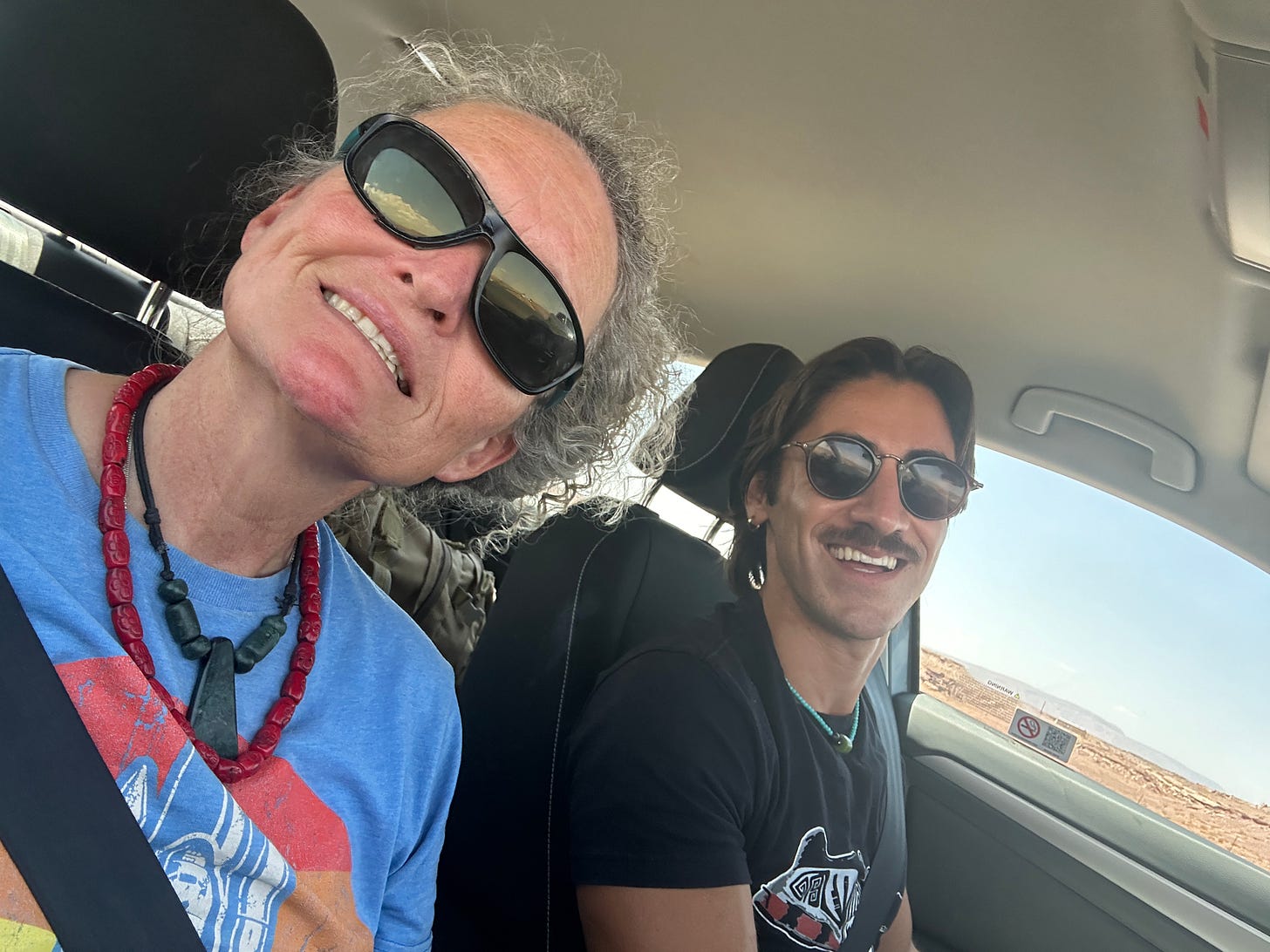
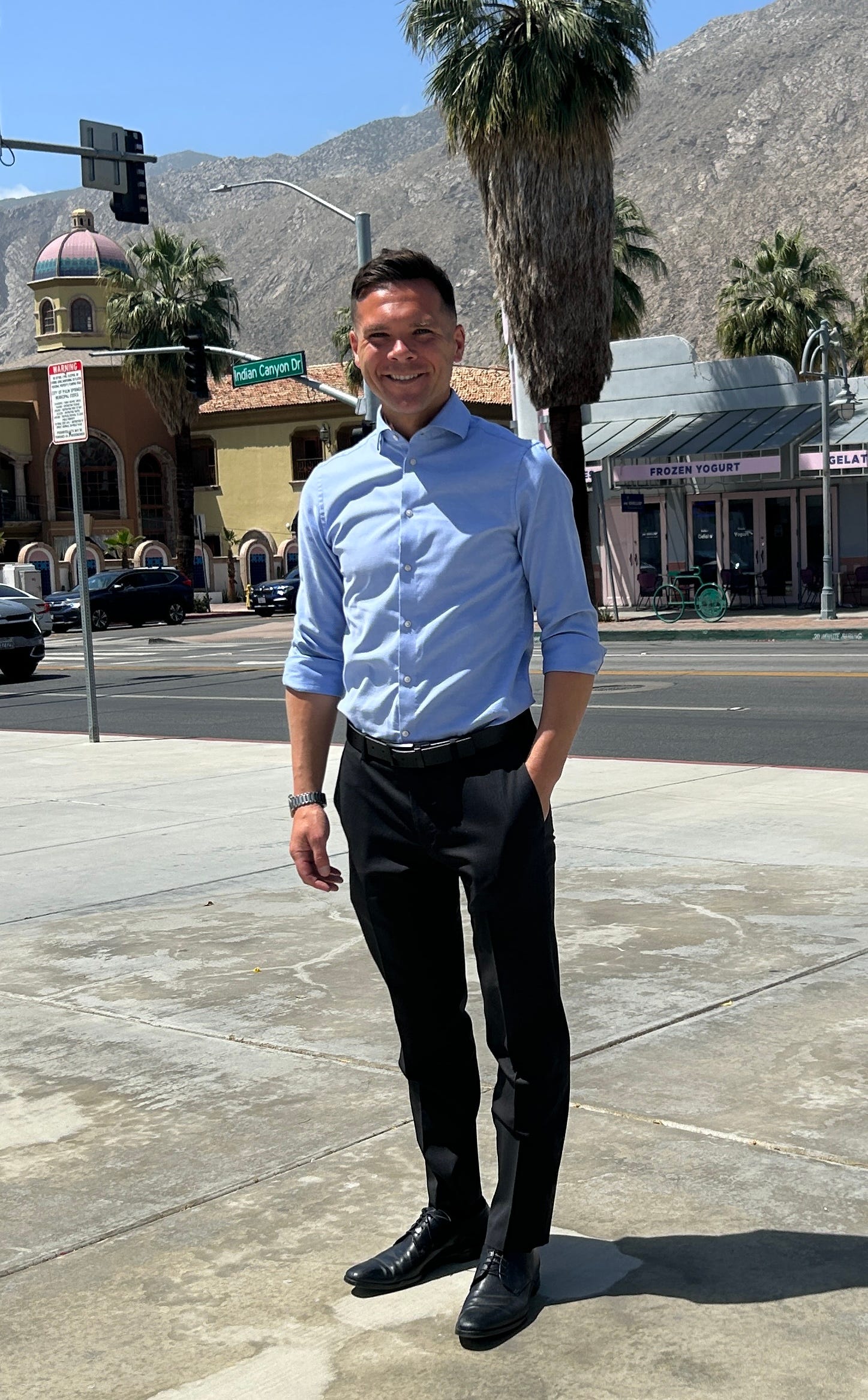
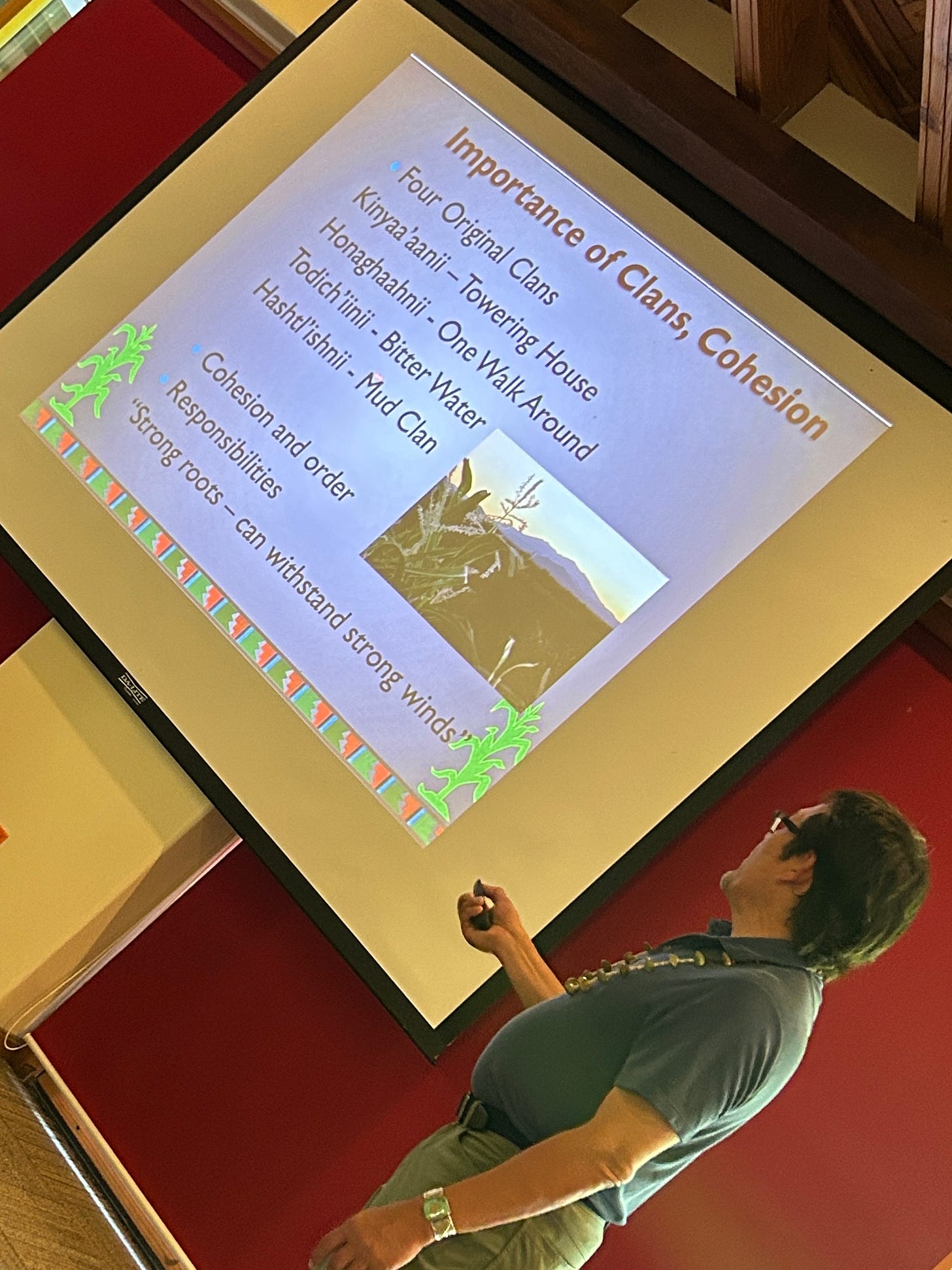
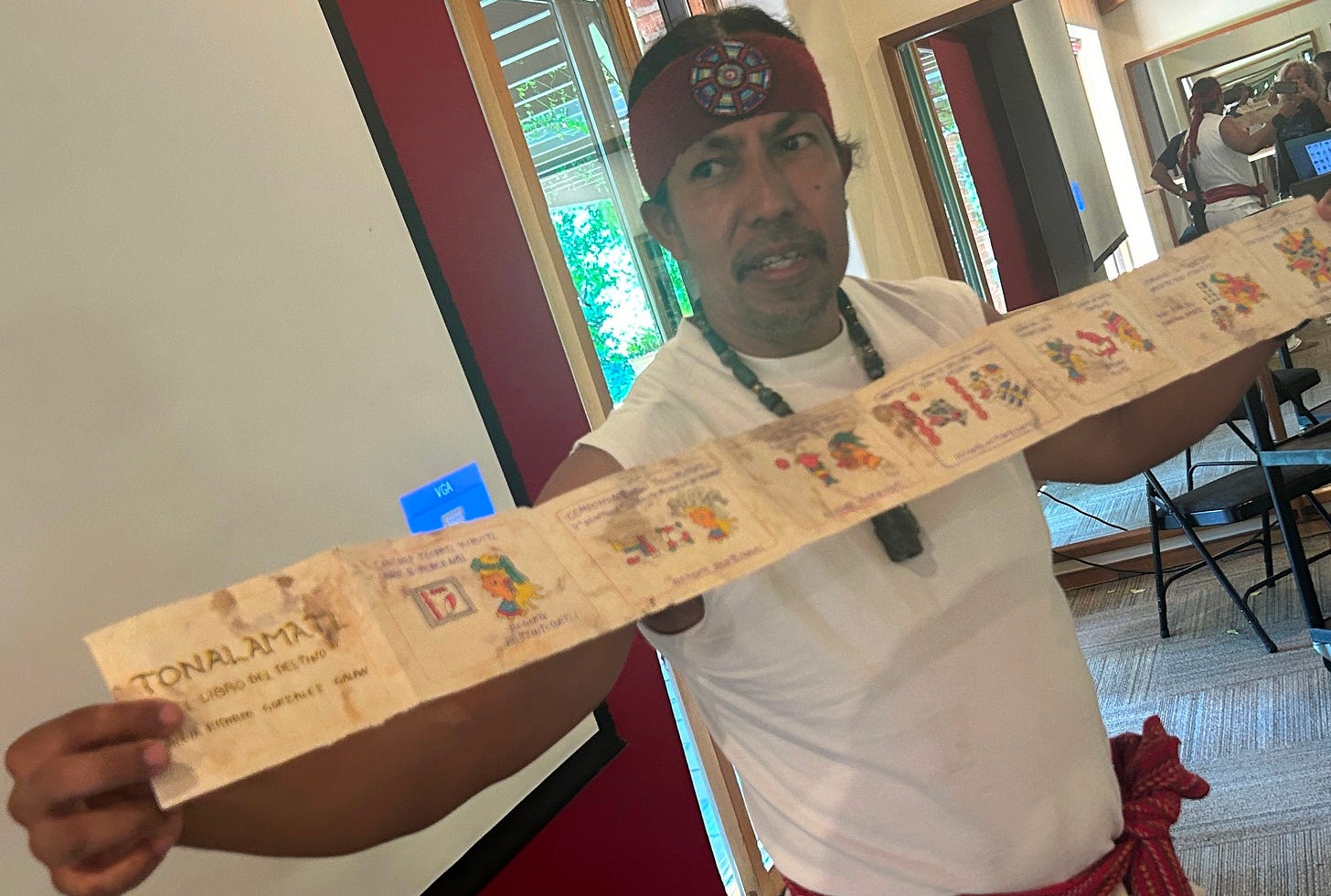
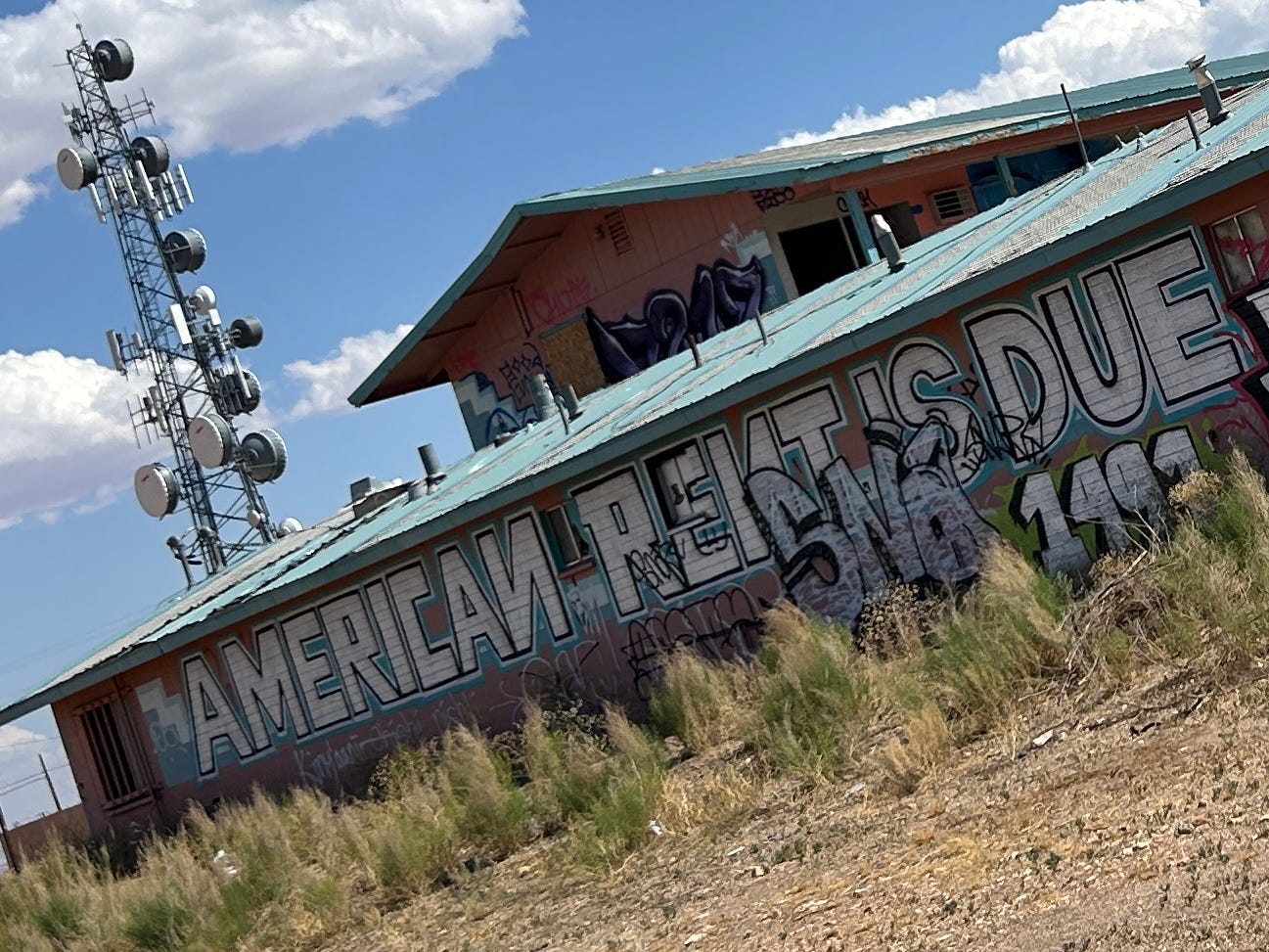
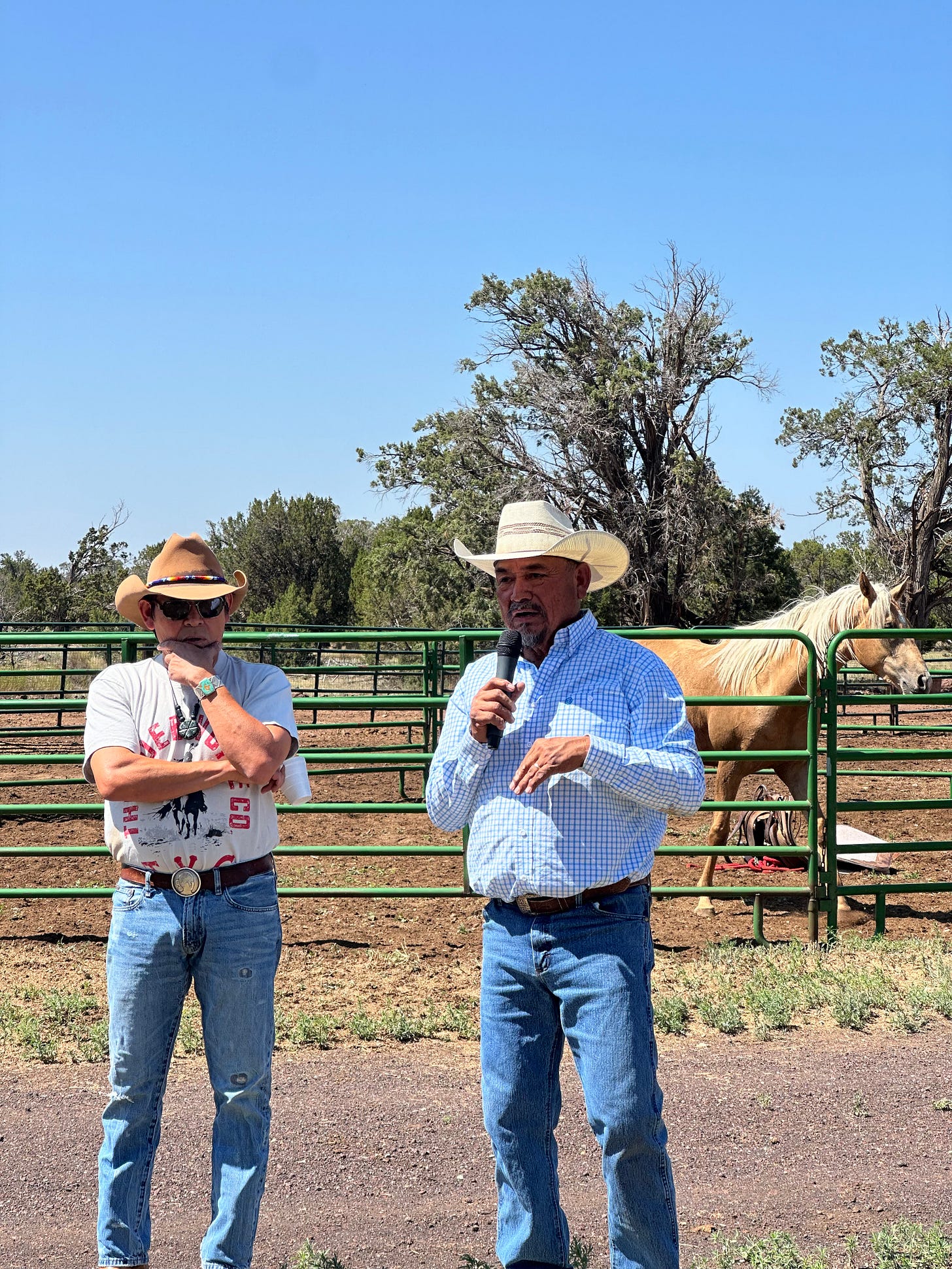
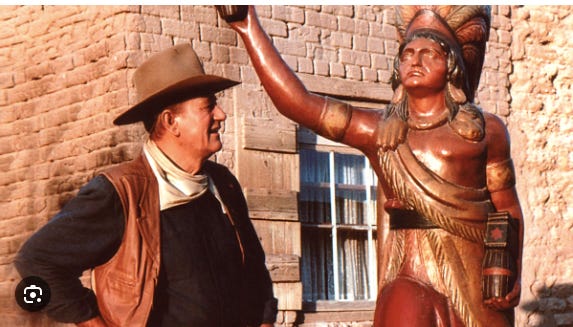
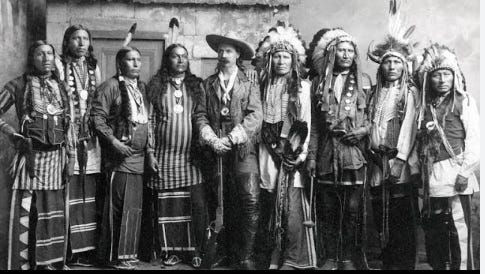
Fascinating stuff, Stephanie. Also, heard your excellent FOOC piece when it went out on 24th May because I always listen to FOOC anyway. A pleasant surprise to hear your name in the intro, so I listened with extra attention! Paul Blez
Oooh, you are so beautifully gifted and I'll have to say it is awful of me to be so jealous of your journeys that have brought such enlightenment and experience to those others of us that can appreciate the value therein. Kudos, ONCE AGAIN, my friend, in bringing so much in the way of reflection and love to all you share! ( P.S.- Was the site of the Sipapu(sp?) shared, or, since I'm revealing my jealous streak, was there a Potlatch on any of your wanderings? Oh, now, I am so being smarmy, for which I WILL apologize! Truly, though, Stephanie, this is a beautiful piece and I am very much looking forward to seeing you again!🫶🏼